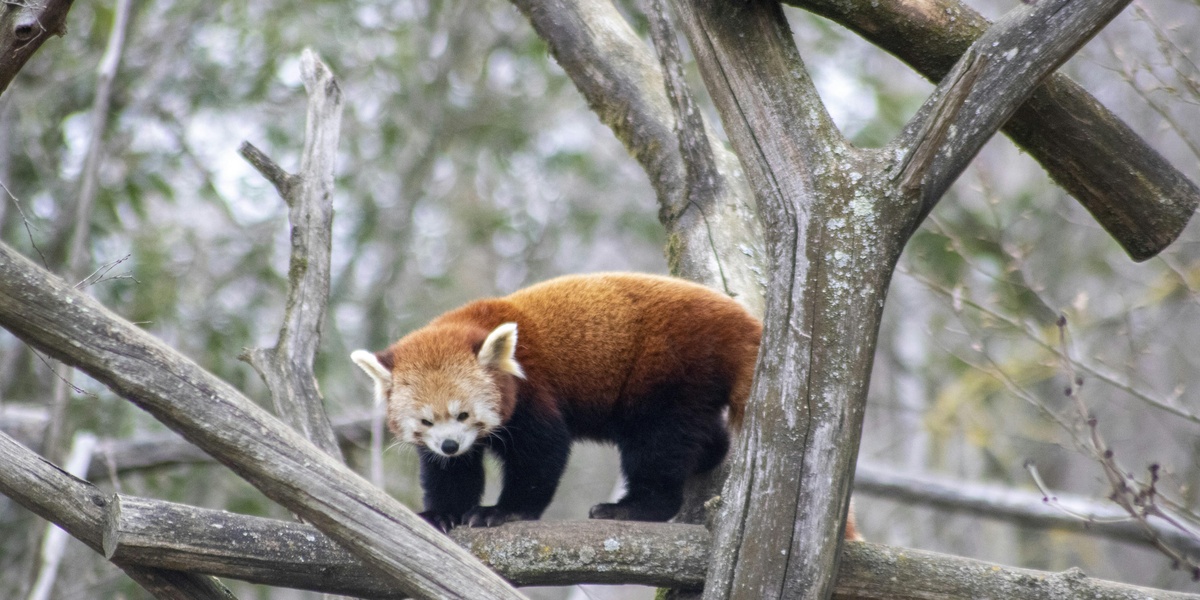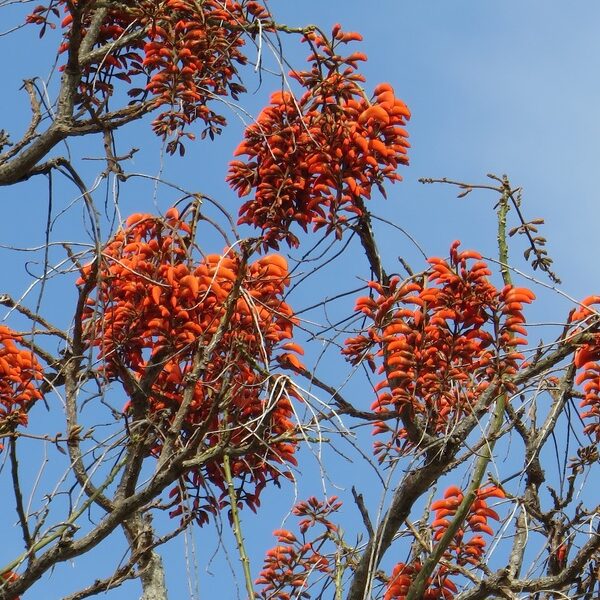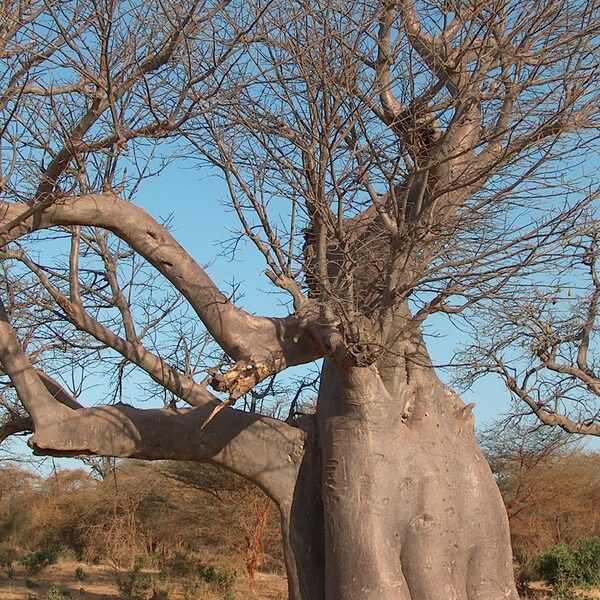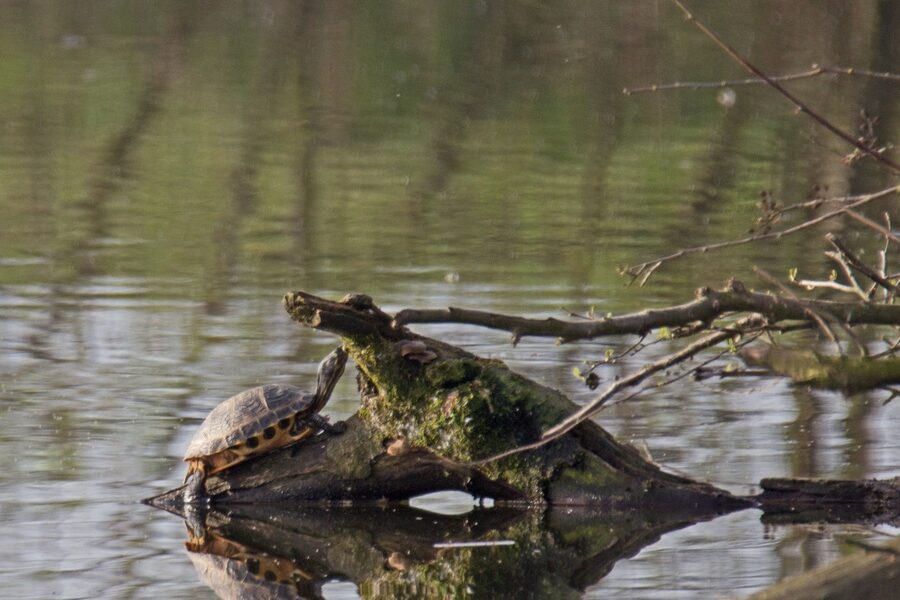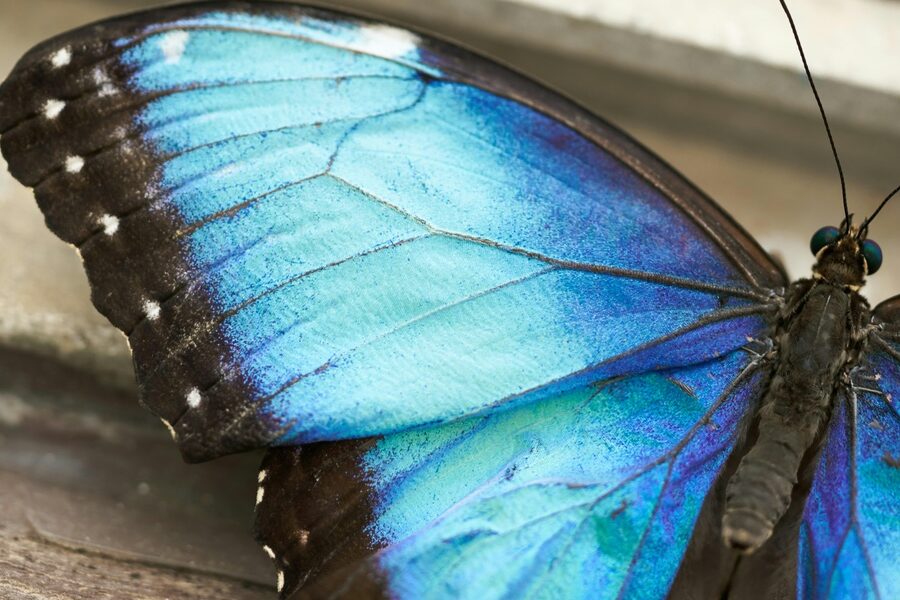Bamboo forests are among the planet’s most mesmerizing and vital ecosystems, characterized by their towering, fast-growing stalks and the rich tapestry of life they support. These verdant, often misty environments are crucial for countless species, providing unique food sources, shelter, and breeding grounds that are found nowhere else.
Within these verdant groves, you’ll discover a fascinating array of bamboo forest animals. Our comprehensive list details exactly 50 species, demonstrating the incredible range from the diminutive Amazon bamboo rat to the elusive White-tailed olalla’s rat. For each, we’ve compiled key information, including their Scientific Name, Geographic Range, Diet, and Average Weight (kg), all presented in the detailed compilation you’ll find below.
What makes bamboo forests such a unique habitat for animals?
Bamboo forests offer an exceptionally specialized habitat due to their dense, tall growth and often specific climate conditions. The bamboo itself provides an abundant, year-round food source for many herbivores, while the thick canopy and undergrowth offer excellent shelter from predators and the elements. This unique combination fosters a high level of biodiversity, leading to the evolution of species highly adapted to this specific environment.
Do all bamboo forests across the world share the same animal species?
Not exactly. While many bamboo forests share similar ecological roles, the specific animal species vary significantly by continent and region. For instance, species found in Asian bamboo forests like the giant panda and red panda are distinct from those inhabiting American bamboo forests, such as certain bamboo rats and specialized birds, due to geographical isolation and different evolutionary paths over millennia.
Bamboo Forest Animals
| Animal Name | Scientific Name | Geographic Range | Diet | Average Weight (kg) |
|---|---|---|---|---|
| Giant panda | Ailuropoda melanoleuca | China (Sichuan, Shaanxi, Gansu) | Bamboo shoots, leaves, stems; occasional other plants and small animals | 100 |
| Red panda | Ailurus fulgens | Nepal, India, Bhutan, northern Myanmar, southwest China | Bamboo leaves and shoots, berries, eggs, insects | 5 |
| Chinese red panda | Ailurus styani | Southwest China (Sichuan, Yunnan), northern Myanmar | Bamboo leaves and shoots, fruits, insects | 6 |
| Golden bamboo lemur | Hapalemur aureus | Madagascar (southeastern rainforests, e.g., Ranomafana) | Bamboo shoots rich in cyanide, leaves | 1.60 |
| Greater bamboo lemur | Prolemur simus | Madagascar (fragmented southeastern rainforests) | Bamboo culm pith, shoots, leaves | 2.50 |
| Eastern lesser bamboo lemur | Hapalemur griseus | Madagascar (eastern humid forests) | Bamboo leaves and shoots | 1.00 |
| Western lesser bamboo lemur | Hapalemur occidentalis | Madagascar (northwest rainforests) | Bamboo leaves, shoots; some other foliage | 1.20 |
| Chinese bamboo rat | Rhizomys sinensis | Southern China, northern Vietnam | Underground bamboo stems, roots, shoots | 2.50 |
| Hoary bamboo rat | Rhizomys pruinosus | Southern China and mainland Southeast Asia | Bamboo roots and shoots, other roots | 2.00 |
| Large bamboo rat | Rhizomys sumatrensis | Myanmar, Thailand, Laos, Cambodia, Malaysia, Sumatra | Bamboo roots, shoots; other underground plant parts | 3.00 |
| Lesser bamboo rat | Cannomys badius | Myanmar, Thailand, Laos, Cambodia, Vietnam | Bamboo roots and shoots, tubers | 1.50 |
| Lesser bamboo bat | Tylonycteris pachypus | Southern China, Thailand, Laos, Cambodia, Vietnam, Malaysia, Indonesia | Aerial insects | 0.01 |
| Greater bamboo bat | Tylonycteris robustula | Southeast Asia (mainland and islands) | Aerial insects | 0.02 |
| Bamboo woodpecker | Gecinulus viridis | Myanmar, Thailand, Laos, Cambodia, Vietnam | Wood-boring beetle larvae in bamboo and woody stems | 0.08 |
| Pale-headed woodpecker | Gecinulus grantia | South and Southeast Asia | Insects in bamboo culms and deadwood | 0.10 |
| Golden parrotbill | Suthora verreauxi | Southern and central China, northern Vietnam | Insects, bamboo seeds, small berries | 0.02 |
| Three-toed parrotbill | Suthora tridactyla | Central China (Sichuan, Gansu) | Insects and bamboo seeds | 0.03 |
| Brown-winged parrotbill | Suthora brunnea | Northeast India, Bhutan, Myanmar, Laos, Vietnam, south China | Insects, bamboo seeds | 0.03 |
| Spectacled parrotbill | Suthora conspicillata | Southwest China (Sichuan, Yunnan) | Insects, bamboo seeds | 0.03 |
| Great parrotbill | Conostoma aemodium | Himalayas to southwest China | Insects, bamboo shoots, seeds | 0.05 |
| Sichuan parrotbill | Suthora przewalskii | Central China (Sichuan) | Insects and bamboo seeds | 0.02 |
| Bamboo antshrike | Cymbilaimus sanctaemariae | Southwestern Amazon (Peru, Brazil, Bolivia) | Insects gleaned from Guadua bamboo | 0.03 |
| Goeldi’s antbird | Akletos goeldii | Southwestern Amazon (Peru, Brazil, Bolivia) | Insects within Guadua bamboo | 0.02 |
| White-cheeked tody-flycatcher | Poecilotriccus albifacies | Peru, western Brazil | Small insects in bamboo | 0.01 |
| Peruvian recurvebill | Syndactyla ucayalae | Peru, western Brazil, northern Bolivia | Insects within bamboo, some seeds | 0.05 |
| Rufous-headed woodpecker | Celeus spectabilis | Peru, western Brazil, northern Bolivia | Wood-boring larvae in bamboo and deadwood | 0.09 |
| Dusky-tailed flatbill | Ramphotrigon fuscicauda | Peru, western Brazil, Bolivia | Flying and gleaned insects in bamboo | 0.02 |
| Flammulated bamboo-tyrant | Hemitriccus flammulatus | Peru and Bolivia (east Andean slopes) | Small insects in Chusquea bamboo | 0.01 |
| White-collared foliage-gleaner | Anabazenops fuscus | Southeast Brazil (Atlantic Forest) | Insects within bamboo, spiders | 0.04 |
| Bamboo foliage-gleaner | Anabazenops dorsalis | Western Amazon and Andean foothills | Insects taken from bamboo | 0.03 |
| Star-throated antwren | Rhopias gularis | Southeast Brazil (Atlantic Forest) | Arthropods gleaned from bamboo | 0.01 |
| Manu antbird | Cercomacra manu | Peru (Manu region), adjacent southwestern Amazon | Insects along bamboo edges | 0.02 |
| Eiffinger’s treefrog | Kurixalus eiffingeri | Taiwan and Ryukyu Islands | Insects; tadpoles consume unfertilized eggs | 0.01 |
| Ochlandrae bush frog | Raorchestes ochlandrae | India (Western Ghats) | Small insects | 0.01 |
| Bamboo borer moth | Omphisa fuscidentalis | Thailand, Laos, Myanmar, northern India | Larvae bore in living bamboo shoots and culms | 0.00 |
| Bamboo longhorn beetle | Chlorophorus annularis | South and East Asia | Larvae in bamboo culms; adults feed on flowers | 0.00 |
| Bamboo powderpost beetle | Dinoderus minutus | Pantropical (native to Asia) | Larvae in dead/dried bamboo | 0.00 |
| Bamboo aphid | Pseudoregma bambucicola | South and East Asia (spreading elsewhere) | Bamboo sap (leaves and stems) | 0.00 |
| Bamboo weevil | Cyrtotrachelus longimanus | Southeast Asia | Larvae bore in bamboo shoots; adults feed on shoots and plant juices | 0.01 |
| Bamboo treebrown | Lethe europa | South and Southeast Asia | Larvae feed on bamboo leaves; adults on sap and fruit | 0.01 |
| Bamboo grass skipper | Polytremis lubricans | South and Southeast Asia | Larvae on bamboo and grasses; adults on nectar | 0.01 |
| Bamboo leafroller moth | Pantana phyllostachysae | China, Taiwan, Japan | Larvae roll and eat bamboo leaves | 0.00 |
| Chalazodes bubble-nest frog | Raorchestes chalazodes | India (Western Ghats) | Small insects; tadpoles develop in bamboo internodes | 0.01 |
| Amazon bamboo rat | Dactylomys dactylinus | Western Amazon (Peru, Brazil, Colombia, Ecuador, Bolivia) | Bamboo leaves and shoots | 0.80 |
| Atlantic bamboo rat | Kannabateomys amblyonyx | Southeast Brazil, northeastern Argentina, eastern Paraguay | Bamboo leaves, shoots | 1.00 |
| White-tailed olalla’s rat | Olallamys albicauda | Andean cloud forests (Colombia, Ecuador) | Bamboo leaves (Chusquea), other foliage | 0.30 |
| Bolivian bamboo rat | Dactylomys boliviensis | Bolivia, southwestern Brazil | Bamboo leaves and shoots | 0.70 |
| Line-fronted canastero | Asthenes urubambensis | Peru and Bolivia (Andean cloud forests) | Arthropods in Chusquea bamboo; some seeds | 0.02 |
| Marcapata spinetail | Cranioleuca marcapatae | Southeast Peru, Bolivia | Insects in Chusquea bamboo | 0.02 |
| Tawny tit-spinetail | Leptasthenura yanacensis | Peru, Bolivia, northwest Argentina | Small insects in bamboo and shrubs | 0.01 |
Images and Descriptions

Giant panda
China’s emblematic bear survives in high-elevation bamboo forests where bamboo makes up nearly its entire diet. Its enlarged wrist “thumb” helps grasp culms. A keystone seed-disperser and grazer, it’s listed as Vulnerable but recovering where bamboo and corridors are protected.
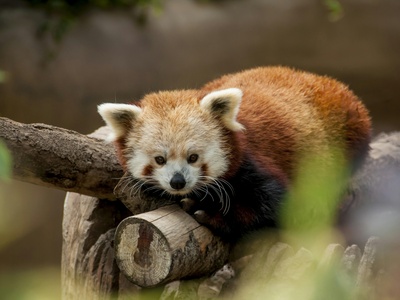
Red panda
A shy, tree-dwelling specialist of cool broadleaf forests with dense bamboo understory. Bamboo dominates its diet year-round. Solitary and crepuscular, it uses hollows and tree cavities near bamboo. Endangered due to habitat fragmentation and bamboo loss.
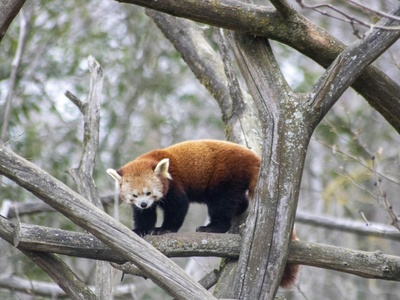
Chinese red panda
This Chinese lineage of red panda inhabits steep, temperate forests with abundant bamboo. It forages along bamboo thickets and rests in trees above them. Endangered, threatened by deforestation, snaring, and declines in bamboo cover from land-use change.
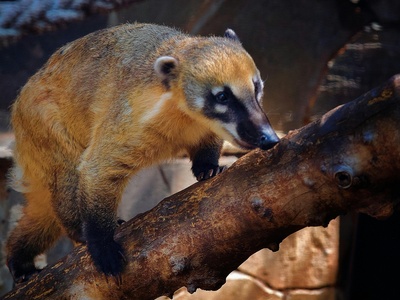
Golden bamboo lemur
An extraordinary bamboo specialist able to detoxify cyanide-rich bamboo shoots. It spends most of its time in dense bamboo stands within humid rainforest. Social and crepuscular, it is Endangered from forest loss and selective cutting of bamboo.
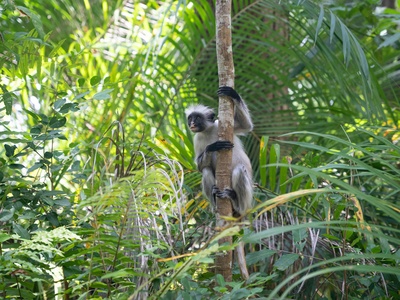
Greater bamboo lemur
Madagascar’s largest bamboo specialist, with powerful jaws for gnawing tough culms. It ranges along riverine bamboo within lowland rainforest. Critically Endangered due to habitat loss and bamboo harvesting, yet it plays a vital role opening culms used by other wildlife.
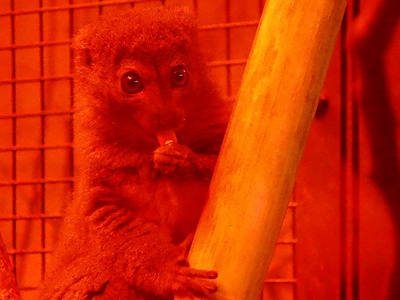
Eastern lesser bamboo lemur
A small, cat-sized lemur rarely far from bamboo patches. It travels along bamboo ladders and sleeps within dense clumps. Vocal and social, it’s a key bamboo leaf browser. Vulnerable, affected by forest fragmentation and cutting of bamboo thickets.
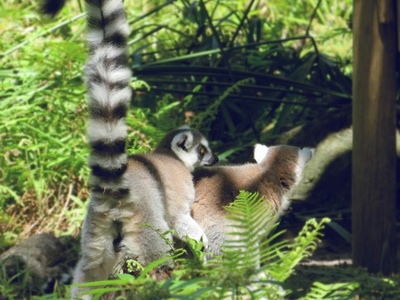
Western lesser bamboo lemur
This northwest Malagasy lemur is tied to bamboo stands in lowland rainforests. It feeds primarily on bamboo foliage and retreats into dense culms for cover. Conservation status varies by subspecies, generally Vulnerable from habitat loss and hunting pressure.
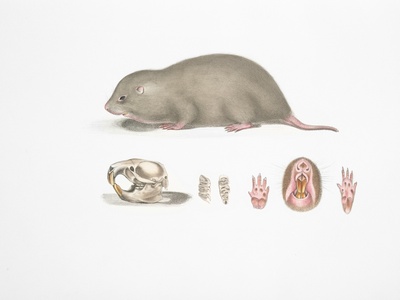
Chinese bamboo rat
A burrowing rodent that farms the forest floor beneath bamboo groves, feeding mostly on subterranean bamboo parts. Its tunnels aerate soil and affect bamboo regeneration. Considered Least Concern but locally impacted by hunting and habitat disturbance.
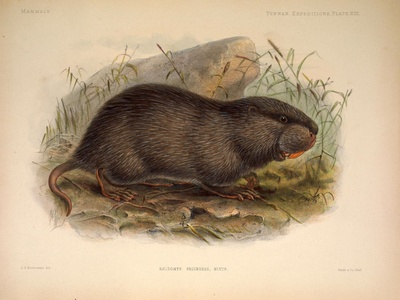
Hoary bamboo rat
Stocky, subterranean, and strongly tied to bamboo stands, it excavates extensive burrows beneath groves. Consumes bamboo year-round, switching among species as shoots flush. Generally Least Concern, though local populations face hunting and land conversion.
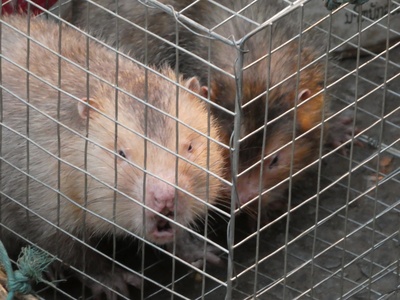
Large bamboo rat
The largest Asian bamboo rat, it shapes soil structure around bamboo clumps with its deep burrows. Feeding centers on bamboo, especially during shoot seasons. Least Concern overall, yet vulnerable to hunting and habitat degradation.
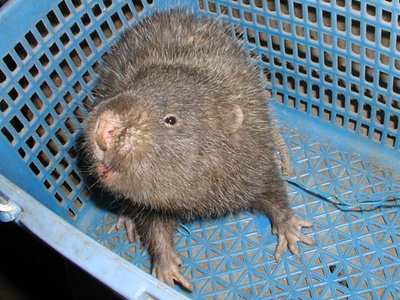
Lesser bamboo rat
A smaller bamboo rat that thrives beneath lowland and hill bamboo. It consumes tender bamboo tissues and helps cycle nutrients via soil disturbance. Least Concern but locally affected by trapping and agricultural expansion.
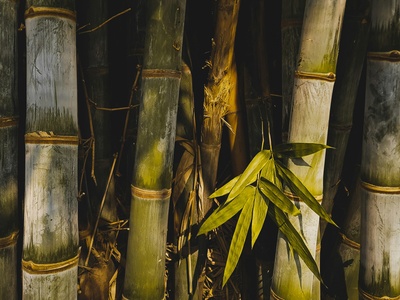
Lesser bamboo bat
One of the world’s smallest bats, it roosts inside slits of live bamboo internodes—an exquisite adaptation to bamboo forests. Families squeeze into single culms. Least Concern, but sensitive to removal of hollow-stemmed bamboo and pesticide-driven insect declines.
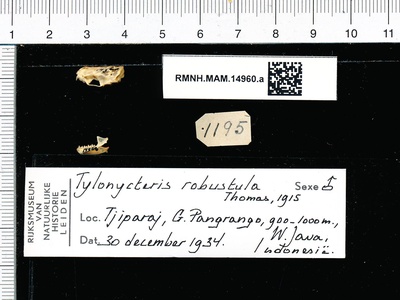
Greater bamboo bat
A flat-headed bat specialized to roost in split bamboo culms, often in disturbed forests where bamboo proliferates. It hunts small insects above bamboo canopy gaps. Least Concern; dependent on the availability of suitable hollow or cracked bamboo stems.
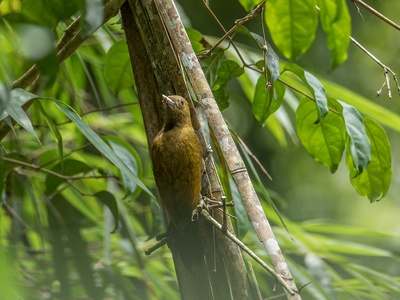
Bamboo woodpecker
A discreet woodpecker that forages by prying and chiseling in bamboo culms and stems, exploiting insects other birds can’t reach. Found in lowland and foothill bamboo forests. Least Concern but tied to the persistence of mature bamboo stands.
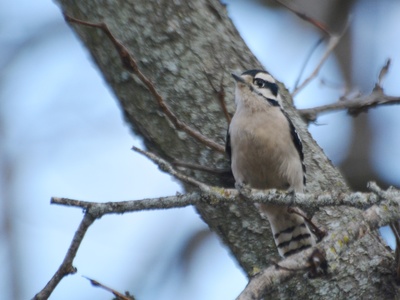
Pale-headed woodpecker
Specialized for life in bamboo thickets, this woodpecker probes split culms and cavities for larvae. It benefits from mixed forests where bamboo clumps are abundant. Least Concern; local declines where bamboo is overharvested.
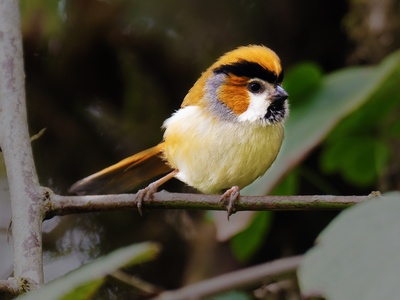
Golden parrotbill
Tiny and highly social, it threads through dense bamboo searching for insects and seeds. Flocks move from clump to clump in cool montane forests. Least Concern; heavily dependent on intact bamboo understory for foraging and nesting.
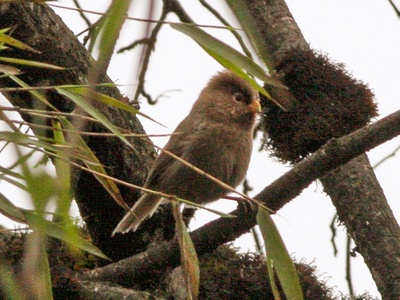
Three-toed parrotbill
A high-elevation specialist of giant bamboo belts. Its reduced outer toe and short bill aid maneuvering through dense culms. Near Threatened, primarily due to the loss and fragmentation of old-growth bamboo thickets in montane forests.
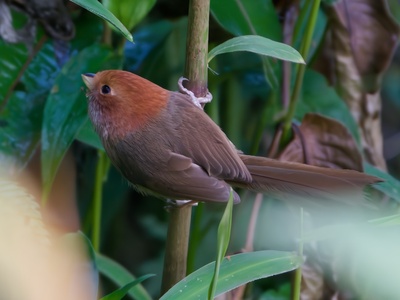
Brown-winged parrotbill
Occurs in extensive bamboo brakes where it gleans insects and seeds along culm nodes. Flocks are year-round residents of bamboo habitats. Least Concern, but reliant on retaining large, contiguous bamboo patches.
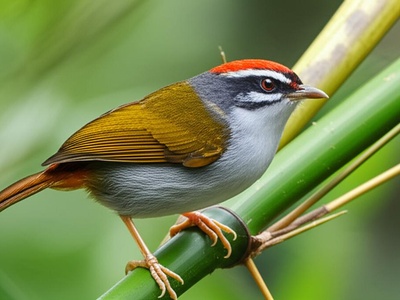
Spectacled parrotbill
Recognizable by its “spectacled” face, this species lives within dense bamboo tangles of cool montane forests. It nests and forages almost exclusively in bamboo. Least Concern, but vulnerable to wholesale understory clearing.

Great parrotbill
A large parrotbill roaming high-altitude bamboo bands below the tree line. It extracts prey from leaf sheaths and probes bamboo joints. Least Concern; persistence hinges on intact subalpine bamboo zones.
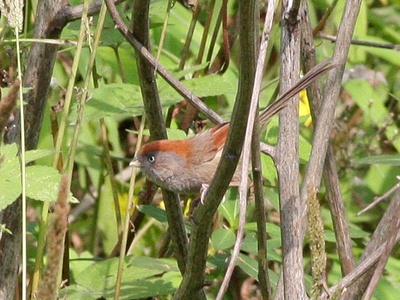
Sichuan parrotbill
Endemic to Sichuan’s temperate forests, it is closely tied to dense bamboo understory for feeding and nesting. Near Threatened due to understory clearing and bamboo die-offs that reduce cover and food.

Bamboo antshrike
A Neotropical specialist that rarely strays from Guadua bamboo thickets along rivers and floodplains. Pairs defend linear territories within bamboo. Least Concern but highly habitat-specific, making it sensitive to bamboo die-back and clearing.
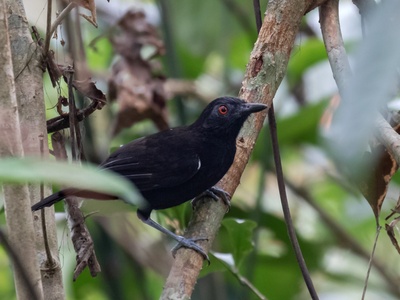
Goeldi’s antbird
Confined to Guadua stands, it forages low, often following army ants along bamboo-littered floors. Its distribution mirrors bamboo patches. Least Concern globally but locally vulnerable when bamboo is removed.
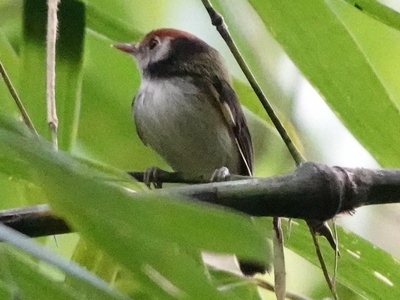
White-cheeked tody-flycatcher
A tiny flycatcher essentially restricted to dense Guadua along rivers. It hawks and gleans insects from the edges of bamboo clumps. Least Concern, yet strongly dependent on riparian bamboo succession.
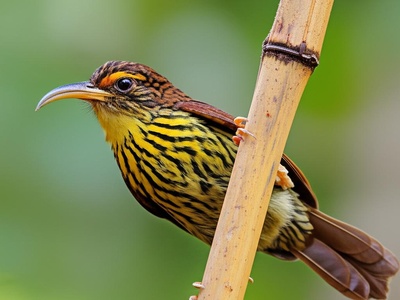
Peruvian recurvebill
With a distinctive upturned bill, it pries prey from bamboo sheaths and internodes, a niche few birds exploit. A bamboo obligate in the Amazon’s Guadua patches. Near Threatened due to localized habitat loss.
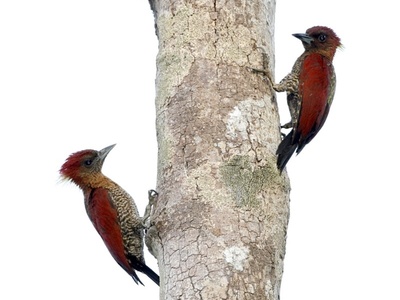
Rufous-headed woodpecker
Patchily distributed woodpecker nearly confined to Guadua bamboo. It drills soft culms and rotten stems for larvae. Least Concern but very local, tracking bamboo stands across the floodplain mosaic.
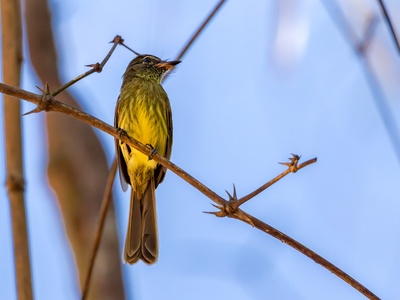
Dusky-tailed flatbill
Strongly associated with Guadua thickets, this flycatcher sallies from bamboo perches to snatch insects. It breeds in or beside bamboo clusters. Least Concern; its fortunes follow the availability of mature bamboo.
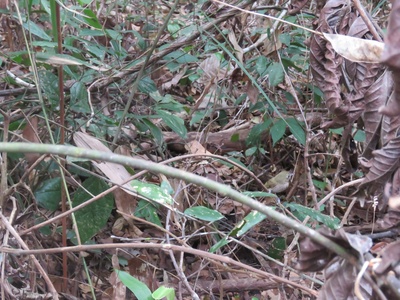
Flammulated bamboo-tyrant
A high-montane bamboo specialist of Andean cloud forests, working methodically through Chusquea tangles. Its populations rise and fall with bamboo flowering cycles. Least Concern but highly localized.
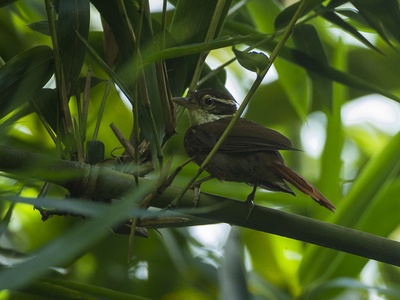
White-collared foliage-gleaner
A classic Atlantic Forest bamboo bird, probing bamboo culms and leaf sheaths. It nests and feeds within extensive bamboo understory. Near Threatened due to Atlantic Forest fragmentation and understory clearing.
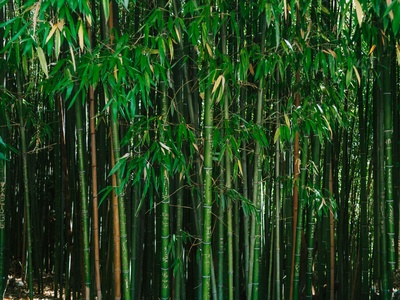
Bamboo foliage-gleaner
Forages almost exclusively in bamboo, flicking leaf sheaths to expose hidden prey. Often found where Guadua forms dense stands. Least Concern overall but dependent on bamboo patch dynamics.
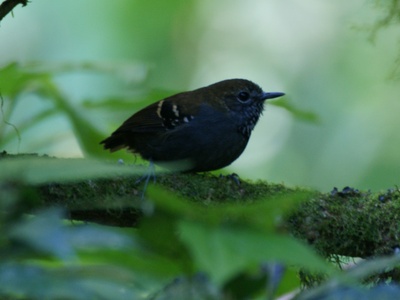
Star-throated antwren
This understory antwren favors bamboo tangles and densely vegetated ravines. Its elaborate song echoes through bamboo-draped slopes. Near Threatened owing to ongoing habitat loss in the Atlantic Forest.
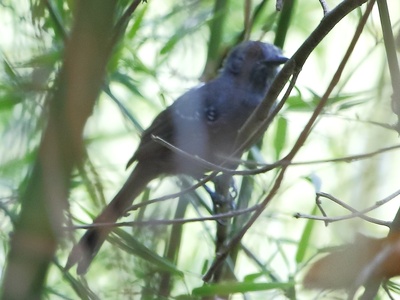
Manu antbird
Named for Peru’s Manu, it is tightly linked to riverine Guadua bamboo, patrolling shadowed interiors and edges. Least Concern but naturally restricted by the patchy distribution of bamboo thickets.
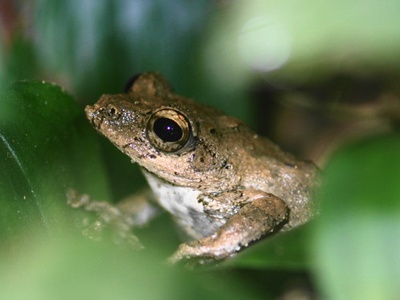
Eiffinger’s treefrog
Breeds in water-filled bamboo internodes, where parents guard and provision tadpoles with eggs—a remarkable bamboo-dependent life cycle. Forest fragmentation and bamboo cutting can erase breeding sites. Least Concern with targeted protections.
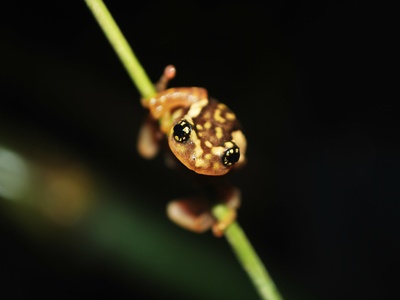
Ochlandrae bush frog
Endemic to bamboo-dominated streamside thickets of Ochlandra. Males call from bamboo culms, and eggs develop in humid bamboo cavities. Habitat specialist; locally threatened by riparian bamboo harvesting and alteration.
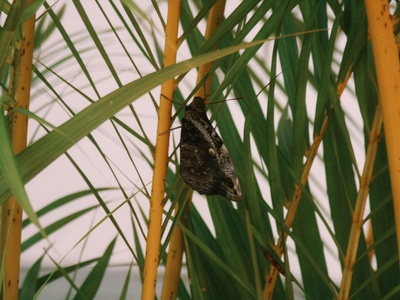
Bamboo borer moth
Known as “bamboo worms,” its larvae tunnel inside bamboo, a delicacy in parts of Thailand. Entire development depends on suitable bamboo stands. Not globally assessed; locally abundant where edible bamboo is common.
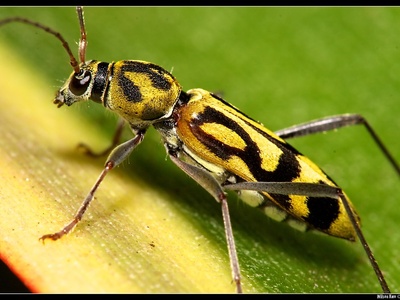
Bamboo longhorn beetle
A striking cerambycid whose larvae develop inside cut or weakened bamboo. It thrives where bamboo is plentiful, including natural groves. Not threatened; important decomposer of dead and dying bamboo.
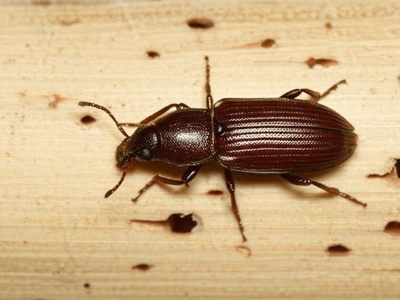
Bamboo powderpost beetle
A tiny borer famous for riddling stored and dead bamboo. In wild stands it helps recycle dead culms, speeding nutrient return to soils. Not threatened, though a notable pest in harvested bamboo.
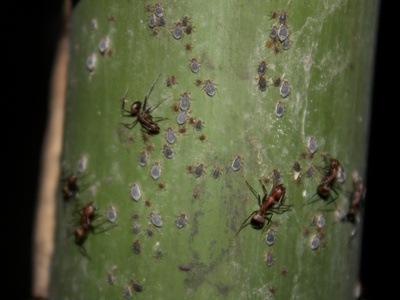
Bamboo aphid
Forms dense colonies on bamboo, sometimes tended by ants for honeydew. Its lifecycle is specialized on bamboo hosts. Not threatened; outbreaks can stress bamboo stands and alter leaf growth.
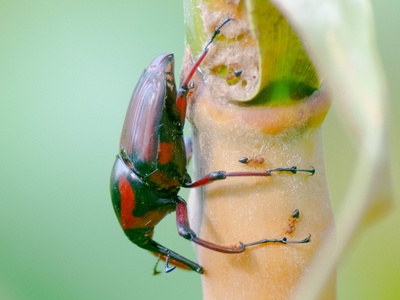
Bamboo weevil
A large, long-armed weevil whose larvae tunnel through developing bamboo shoots, shaping shoot survival and clump structure. Sometimes harvested as edible grubs. Not assessed globally; locally common where bamboo is cultivated and wild.
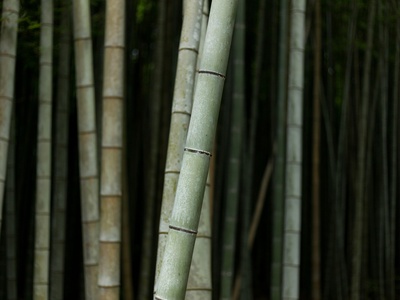
Bamboo treebrown
A forest butterfly named for its bamboo-dependent caterpillars. Adults cruise shady bamboo trails, settling on sap flows and fallen fruit. Least Concern; reliant on intact understory bamboo for larval host plants.
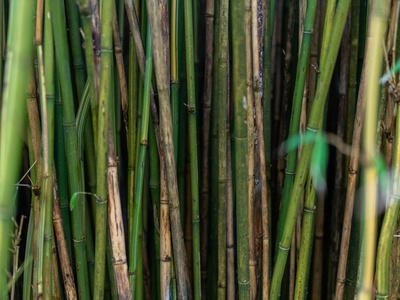
Bamboo grass skipper
A fast, low-flying skipper whose caterpillars roll bamboo leaves into shelters. Common in bamboo glades and edges. Least Concern, but declines where understory is heavily cleared.
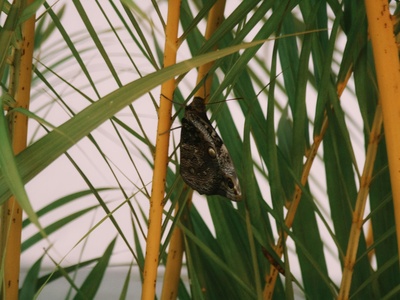
Bamboo leafroller moth
Caterpillars stitch bamboo leaves into tubes, feeding safely within. It can locally defoliate clumps but also supports predators higher up the food web. Not threatened; closely tied to Phyllostachys and related bamboos.
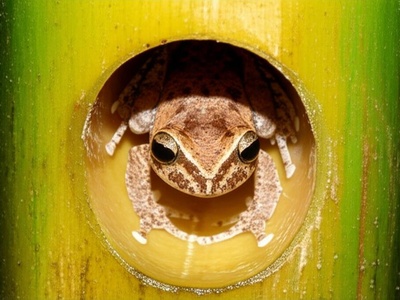
Chalazodes bubble-nest frog
A Critically Endangered frog that breeds only inside water-holding bamboo internodes. Males guard eggs; tadpoles complete development within bamboo cavities. Severe declines follow riparian bamboo cutting and streamside disturbance.
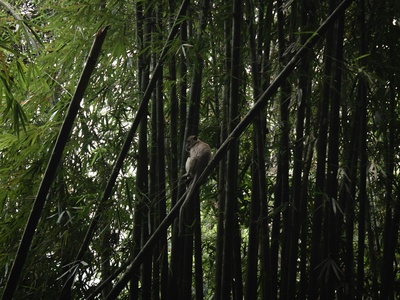
Amazon bamboo rat
An arboreal spiny rat that navigates Guadua bamboo tangles above flooded forests. It feeds almost entirely on bamboo foliage. Nocturnal and quiet, it’s Least Concern but tied to large, contiguous bamboo stands.
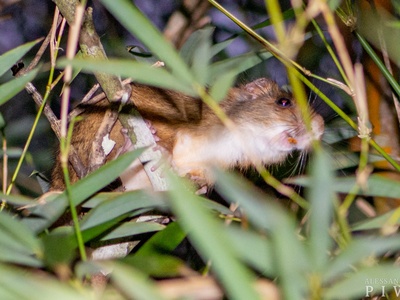
Atlantic bamboo rat
Lives in Atlantic Forest bamboo (Merostachys), often above streams. Long claws and stiff tail aid climbing among culms. Near Threatened as Atlantic Forest and bamboo belts shrink and become fragmented.
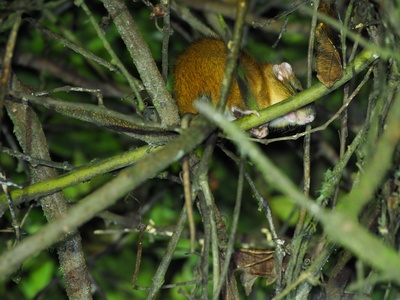
White-tailed olalla’s rat
A high-Andean bamboo specialist moving through Chusquea thickets at night. It grazes tender leaves and uses dense bamboo for cover from predators. Data Deficient to Near Threatened locally due to narrow range and habitat disturbance.
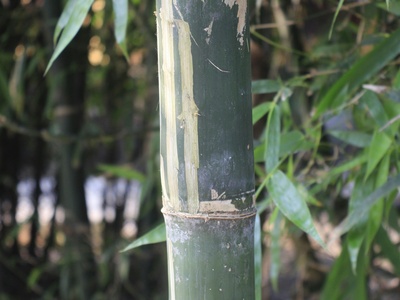
Bolivian bamboo rat
Closely tied to riparian Guadua stands, where it feeds and shelters. It is nocturnal and rarely seen, detected by feeding sign on culms. Likely Least Concern but highly habitat-specific.
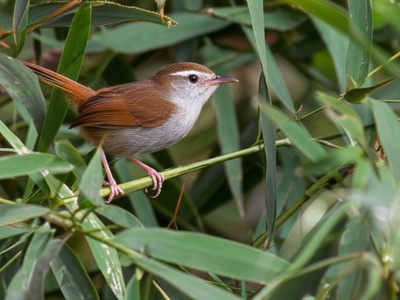
Line-fronted canastero
A slender furnariid threading through bamboo tangles in cloud forests. It gleans insects from bamboo stems and leaves. Near Threatened due to its narrow elevational band and dependence on intact Chusquea stands.
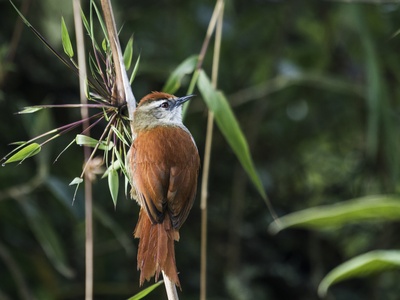
Marcapata spinetail
Confined to humid Andean slopes rich in bamboo, it pries prey from leaf sheaths and culm nodes. Local and uncommon, sensitive to understory clearing. Considered Near Threatened regionally.
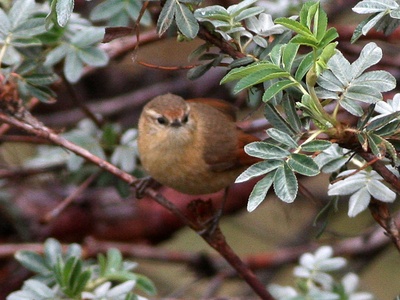
Tawny tit-spinetail
Occupies montane forest edges and bamboo thickets, gleaning tiny insects from leaves. A bamboo-favoring specialist in many sites. Least Concern overall but reliant on structurally complex understories including bamboo patches.
